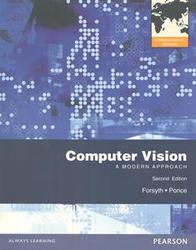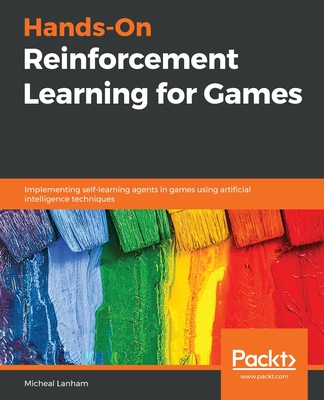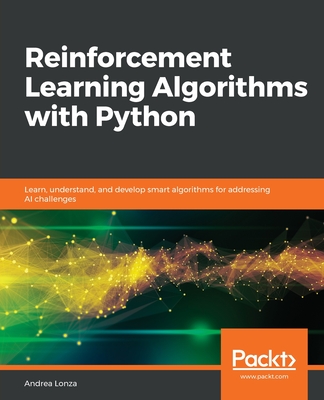Hands-On Reinforcement Learning for Games
暫譯: 實戰強化學習於遊戲開發
Lanham, Micheal
- 出版商: Packt Publishing
- 出版日期: 2020-01-03
- 售價: $1,380
- 貴賓價: 9.5 折 $1,311
- 語言: 英文
- 頁數: 432
- 裝訂: Quality Paper - also called trade paper
- ISBN: 1839214937
- ISBN-13: 9781839214936
-
相關分類:
Reinforcement、遊戲設計 Game-design
立即出貨 (庫存=1)
買這商品的人也買了...
-
 The Intel Microprocessors, 8/e (IE-Paperback)
The Intel Microprocessors, 8/e (IE-Paperback)$1,300$1,274 -
 Neural Networks and Learning Machines, 3/e (IE-Paperback)
Neural Networks and Learning Machines, 3/e (IE-Paperback)$1,120$1,098 -
 Digital Systems: Principles and Applications, 11/e (IE-Paperback)
Digital Systems: Principles and Applications, 11/e (IE-Paperback)$1,350$1,323 -
 Computer Vision: A Modern Approach, 2/e (IE-Paperback)
Computer Vision: A Modern Approach, 2/e (IE-Paperback)$1,250$1,225 -
 Binary Hacks -- 駭客秘傳技巧一百招
Binary Hacks -- 駭客秘傳技巧一百招$580$458 -
 $474自製編程語言
$474自製編程語言 -
 兩周自製腳本語言
兩周自製腳本語言$354$336 -
 $414自己動手構造編譯系統:編譯、彙編與鏈接
$414自己動手構造編譯系統:編譯、彙編與鏈接 -
 $1,519Fundamentals of Database Systems, 7/e (IE-Paperback)
$1,519Fundamentals of Database Systems, 7/e (IE-Paperback) -
 Computer Systems: A Programmer's Perspective, 3/e (IE-Paperback)
Computer Systems: A Programmer's Perspective, 3/e (IE-Paperback)$2,980$2,920 -
 Digital Systems: Principles and Applications, 12/e (GE-Paperback)
Digital Systems: Principles and Applications, 12/e (GE-Paperback)$2,300$2,185 -
 為你自己學 Ruby on Rails
為你自己學 Ruby on Rails$480$379 -
 $534MATLAB/Simulink 系統模擬
$534MATLAB/Simulink 系統模擬 -
 Foundations of Computer Science, 4/e (Paperback)
Foundations of Computer Science, 4/e (Paperback)$1,280$1,254 -
 數位邏輯電路實習, 4/e
數位邏輯電路實習, 4/e$430$387 -
 Digital Design: With an Introduction to the Verilog HDL, VHDL, and SystemVerilog, 6/e (GE-Paperback)
Digital Design: With an Introduction to the Verilog HDL, VHDL, and SystemVerilog, 6/e (GE-Paperback)$1,380$1,352 -
 Algorithms for Optimization (Hardcover)
Algorithms for Optimization (Hardcover)$1,680$1,646 -
 Deep Learning - Hardware Design
Deep Learning - Hardware Design$680$646 -
 Game Theory, 2/e (Paperback)
Game Theory, 2/e (Paperback)$3,690$3,506 -
 Advanced Engineering Mathematics, 7/e (Paperback)
Advanced Engineering Mathematics, 7/e (Paperback)$1,420$1,392 -
 $1,4883D Graphics Rendering Cookbook: A comprehensive guide to exploring rendering algorithms in modern OpenGL and Vulkan (Paperback)
$1,4883D Graphics Rendering Cookbook: A comprehensive guide to exploring rendering algorithms in modern OpenGL and Vulkan (Paperback) -
 $2,146Introduction to Algorithms, 4/e (Hardcover)
$2,146Introduction to Algorithms, 4/e (Hardcover) -
 A First Course in the Finite Element Method, Enhanced Edition, SI Version, 6/e (Paperback)
A First Course in the Finite Element Method, Enhanced Edition, SI Version, 6/e (Paperback)$1,440$1,411 -
 Finite Element Simulations with ANSYS Workbench 2023 (附多媒體光碟)
Finite Element Simulations with ANSYS Workbench 2023 (附多媒體光碟)$880$862 -
 LLM 大型語言模型的絕世祕笈:27路獨步劍法,帶你闖蕩生成式 AI 的五湖四海 (iThome鐵人賽系列書)
LLM 大型語言模型的絕世祕笈:27路獨步劍法,帶你闖蕩生成式 AI 的五湖四海 (iThome鐵人賽系列書)$650$507
相關主題
商品描述
|
With the increased presence of AI in the gaming industry, developers are challenged to create highly responsive and adaptive games by integrating artificial intelligence into their projects. This book is your guide to learning how various reinforcement learning techniques and algorithms play an important role in game development with Python.
Starting with the basics, this book will help you build a strong foundation in reinforcement learning for game development. Each chapter will assist you in implementing different reinforcement learning techniques, such as Markov decision processes (MDPs), Q-learning, actor-critic methods, SARSA, and deterministic policy gradient algorithms, to build logical self-learning agents. Learning these techniques will enhance your game development skills and add a variety of features to improve your game agent’s productivity. As you advance, you’ll understand how deep reinforcement learning (DRL) techniques can be used to devise strategies to help agents learn from their actions and build engaging games.
By the end of this book, you’ll be ready to apply reinforcement learning techniques to build a variety of projects and contribute to open source applications. |
商品描述(中文翻譯)
隨著人工智慧在遊戲產業中的日益普及,開發者面臨著將人工智慧整合到其專案中,以創造高度反應和適應性的遊戲的挑戰。本書將指導您學習各種強化學習技術和演算法在使用 Python 進行遊戲開發中的重要角色。
本書從基礎開始,幫助您在遊戲開發的強化學習上建立堅實的基礎。每一章將協助您實現不同的強化學習技術,例如馬可夫決策過程 (MDPs)、Q-learning、演員-評論者方法、SARSA 和確定性策略梯度演算法,以建立邏輯自學代理。學習這些技術將提升您的遊戲開發技能,並增加多樣化的功能以改善您的遊戲代理的生產力。隨著進步,您將理解深度強化學習 (DRL) 技術如何用於制定策略,幫助代理從其行動中學習並構建引人入勝的遊戲。
在本書結束時,您將準備好應用強化學習技術來構建各種專案並貢獻於開源應用程式。
作者簡介
Micheal Lanham is a proven software and tech innovator with 20 years of experience. During that time, he has developed a broad range of software applications in areas such as games, graphics, web, desktop, engineering, artificial intelligence, GIS, and machine learning applications for a variety of industries as an R&D developer. At the turn of the millennium, Micheal began working with neural networks and evolutionary algorithms in game development. He was later introduced to Unity and has been an avid developer, consultant, manager, and author of multiple Unity games, graphic projects, and books ever since.
作者簡介(中文翻譯)
Micheal Lanham 是一位經驗豐富的軟體和科技創新者,擁有 20 年的經驗。在這段時間內,他作為研發開發者,開發了廣泛的軟體應用程式,涵蓋遊戲、圖形、網頁、桌面、工程、人工智慧、地理資訊系統(GIS)和機器學習等多個領域,服務於各種產業。在千禧年之際,Micheal 開始在遊戲開發中使用神經網路和進化演算法。隨後,他接觸到了 Unity,並自此成為一名熱衷的開發者、顧問、經理以及多部 Unity 遊戲、圖形專案和書籍的作者。











